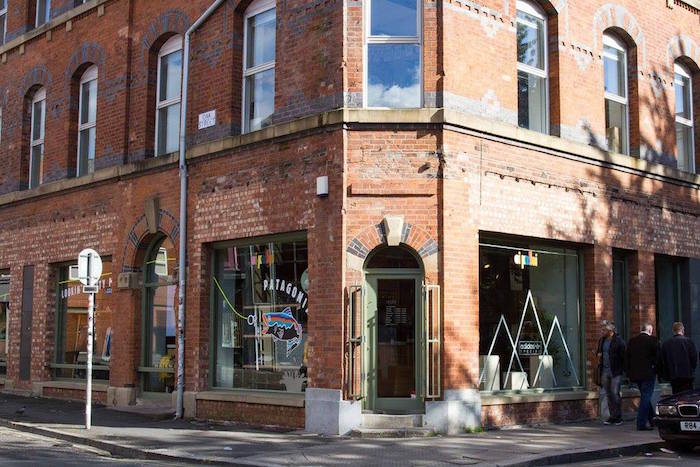Multi-million pound renovation of the John Rylands Library approved by council
- Written by Thom Bamford
- Last updated 1 year ago
- City of Manchester, Community, Culture, Featured, History, Museums

The council have green-lit a huge restoration project on one of Manchester’s beloved landmarks, the John Rylands Library.
In a significant move to enrich the researcher and visitor experience, the John Rylands Library is undergoing a massive renovation project.
The ‘Next Chapter’ work will include creating ‘an updated exhibition space, an advanced imaging laboratory, a flexible event space, and a refreshed main entrance’. Architects, Donald Insall Associates, say the new upgrades ‘speak to the building’s evolution through the 1890s, 1920s, 1960s and 2000s’.
This ambitious £7.6 million capital investment aligns with the Library’s Imagine2030 vision, marking a crucial milestone almost to bringing the much-loved Manchester Library up to scratch.
The John Rylands Library

The Rylands Next Chapter project aims to equip the library for the challenges and opportunities of the mid-21st century.
The redesigned spaces promise to elevate the Library’s role in research, enhance student experiences, and foster public engagement with research agendas.
“The Rylands is one of the great libraries of the world,” said Professor Christopher Pressler, John Rylands University Librarian, on announcing the news that Manchester City Council has approved a planning application for the refurbishment.
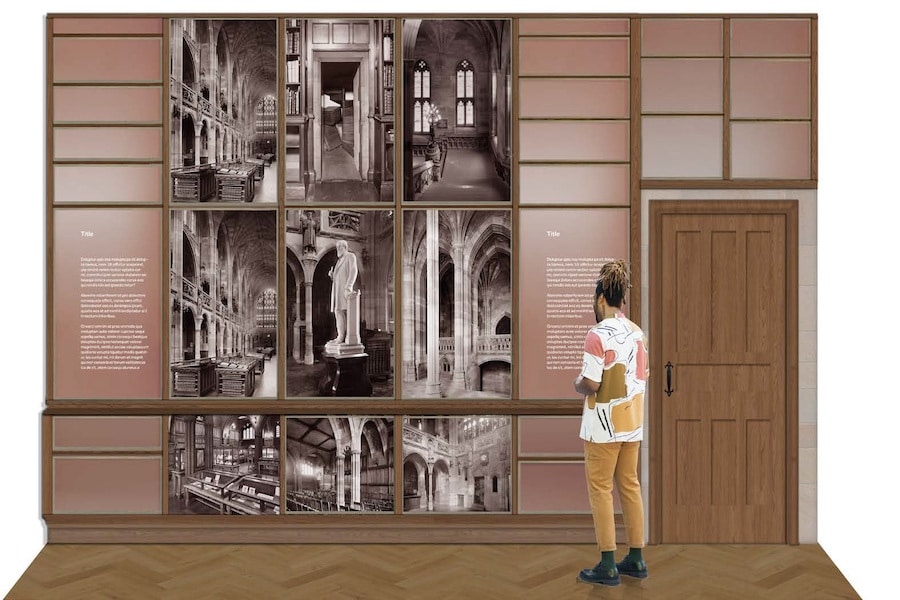
“I am tremendously proud to lead this remarkable institution as we approach our 125th anniversary in 2025. The Next Chapter project will deliver world-class facilities for research and engagement, of a quality to match our extraordinary collections and building.
“It will equip the Rylands to address the many challenges and opportunities of the mid-21st century, and it will reinforce the Rylands’ importance to the University, the city of Manchester, and world heritage.”
Transformation at the John Rylands Library
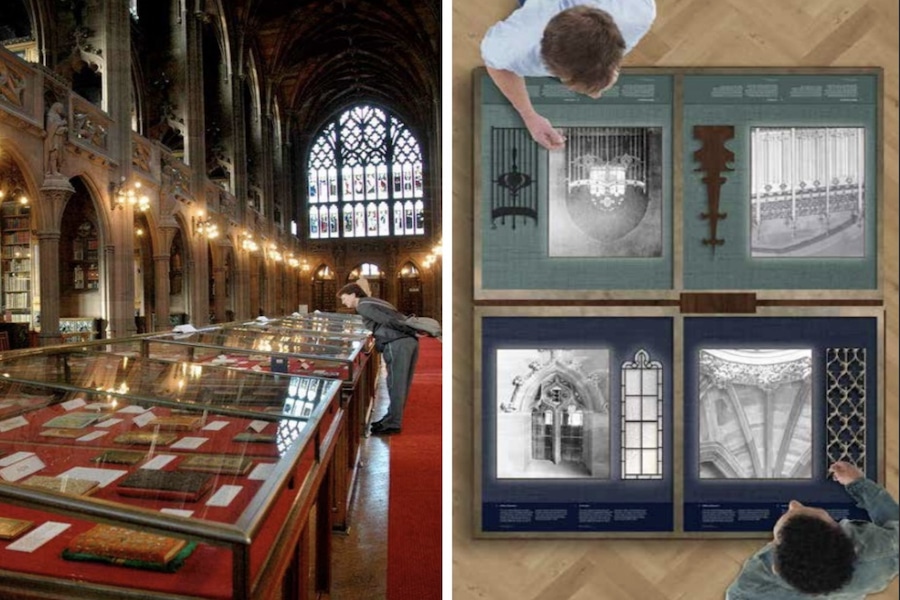
Visitors can anticipate several transformative changes, including:
- Revamped Exhibition Spaces: Creating dynamic and engaging showcases.
- Enhanced Event Facilities: Providing versatile spaces for academic and public events.
- Refreshed Entrance and Reception Area: Welcoming visitors with a modern touch.
The History of the Johnn Rylands Library
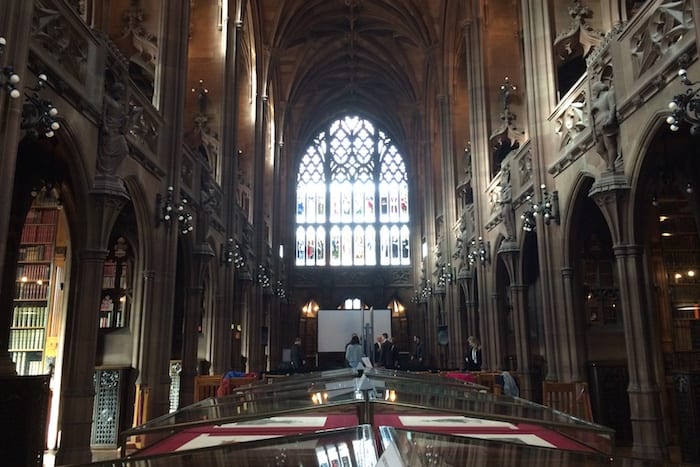
Recognising the Grade-I listed status of Rylands, the project emphasises preservation and enhancement.
The John Rylands was founded by Enriqueta Rylands in memory of her husband John Rylands, who died in 1888. Two years later, she used money from his estate to begin the construction of the library on Deansgate, in what was known to be a salacious area of the city.
Construction took 10 years, meaning visitors were welcomed in on New Year’s Day, 1900. The library became a part of the University in 1972, and now houses the majority of Special Collections of The University of Manchester Library, the third largest academic library in the country.

Collaborating with renowned conservation architects Donald Insall Associates and exhibition experts Nissen Richards Studio, the Library ensures a harmonious blend of innovation and heritage.
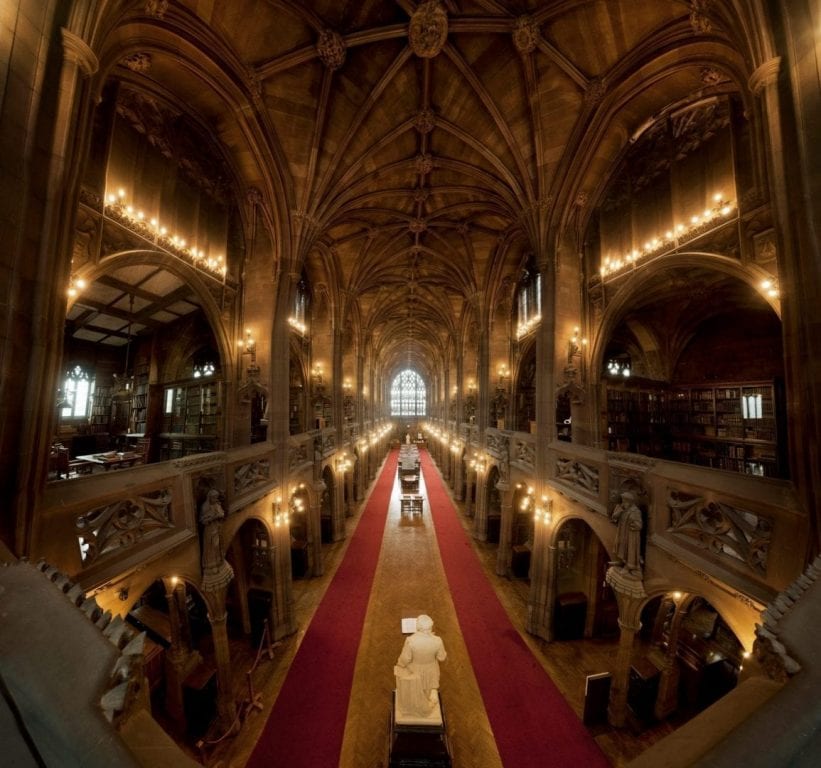
John Rylands Library Project timeline highlights
- Project’s Scope and Budget Agreed (October 2022): Consultants submit RIBA Stage 2 report; £7.6 million budget approved.
- Project Commences (February 2023 – June 2023): Stage 3 (Spatial Coordination) initiated, and Nissen Richards Studio joins the project.
- Ongoing Work (June 2023 – December 2023): Collaboration with Nissen Richards for gallery concepts and discussions with potential funders.
- Approved by Council (February 2024)
The Future of John Rylands Library
The Next Chapter project aims to deliver world-class facilities that match the exceptional collections housed within Rylands.
Christopher Pressler, John Rylands University Librarian, envisions the project as a response to the challenges and opportunities of the mid-21st century, reinforcing Rylands’ global significance.
Architectural innovations
Donald Insall Associates proposes significant changes, including a redesigned entrance, in alignment with the University of Manchester’s vision for an improved visitor and researcher experience.
Plans submitted to Manchester City Council outline upgraded exhibition spaces, event areas, and enhanced imaging laboratories, bringing the building up to modern standards.
Led by Donald Insall associate Rory Chisholm, the architectural team focuses on developing a design language that honours the historic layers of Rylands.
The challenge lies in unifying the building’s diverse architectural eras, from the 1890s to the 2000s, while ensuring the Next Chapter proposals feel like a cohesive, new phase.
Project collaborators
The project team includes WML Consulting (civil and structural engineer), Hoare Lea (MEP engineer, fire engineer, and acoustics consultant), and project manager Arcadis. The collaborative efforts ensure a holistic approach to the redesign, taking into account various engineering and architectural aspects.
Pending permission, construction is anticipated to begin in January.
The University of Manchester remains committed to preserving the unique character of Rylands, ensuring the proposed changes align with the building’s historical significance.
Who was John Rylands?
This architectural marvel, showcasing Victorian Gothic aesthetics, resembles more of a castle or cathedral than a traditional library.
In 1888, John Rylands, a highly successful industrialist in Manchester with a substantial fortune of £2.75 million, passed away.
To commemorate her late husband, Enriqueta Rylands commissioned the library’s construction in 1890.
Housing a world-class collection, this library boasts the oldest known fragment of the New Testament, the St John Fragment.
Among the treasures within its expansive and diverse collection are splendidly illuminated medieval manuscripts and a 1476 William Caxton edition of Chaucer’s Canterbury Tales.
You can find out more on their website by clicking here
- This article was last updated 1 year ago.
- It was first published on 10 January 2024 and is subject to be updated from time to time. Please refresh or return to see the latest version.
Did we miss something? Let us know: press@ilovemanchester.com
Want to be the first to receive all the latest news stories, what’s on and events from the heart of Manchester? Sign up here.
Manchester is a successful city, but many people suffer. I Love Manchester helps raise awareness and funds to help improve the lives and prospects of people across Greater Manchester – and we can’t do it without your help. So please support us with what you can so we can continue to spread the love. Thank you in advance!
An email you’ll love. Subscribe to our newsletter to get the latest news stories delivered direct to your inbox.
Got a story worth sharing?
What’s the story? We are all ears when it comes to positive news and inspiring stories. You can send story ideas to press@ilovemanchester.com
While we can’t guarantee to publish everything, we will always consider any enquiry or idea that promotes:
- Independent new openings
- Human interest
- Not-for-profit organisations
- Community Interest Companies (CiCs) and projects
- Charities and charitable initiatives
- Affordability and offers saving people over 20%
For anything else, don’t hesitate to get in touch with us about advertorials (from £350+VAT) and advertising opportunities: advertise@ilovemanchester.com



The eclectic group that’s been helping writers cut their teeth for 50 years

Manchester and Los Angeles prove that opposites really do attract

“His presence will be deeply missed” Children’s hospice bids farewell to their visionary CEO









